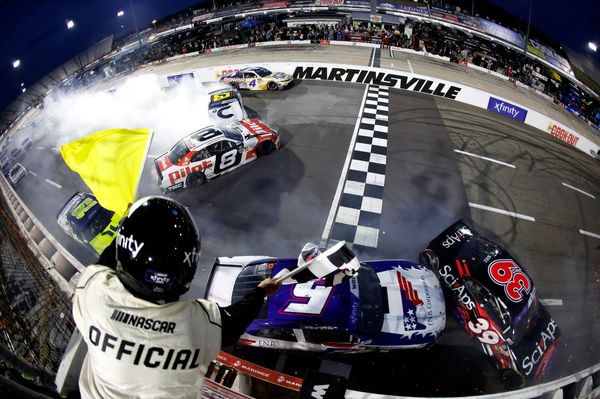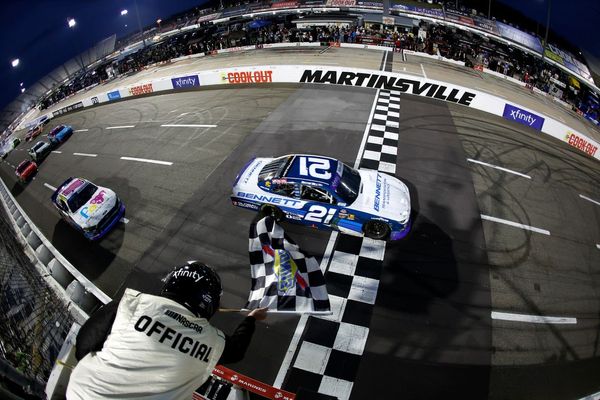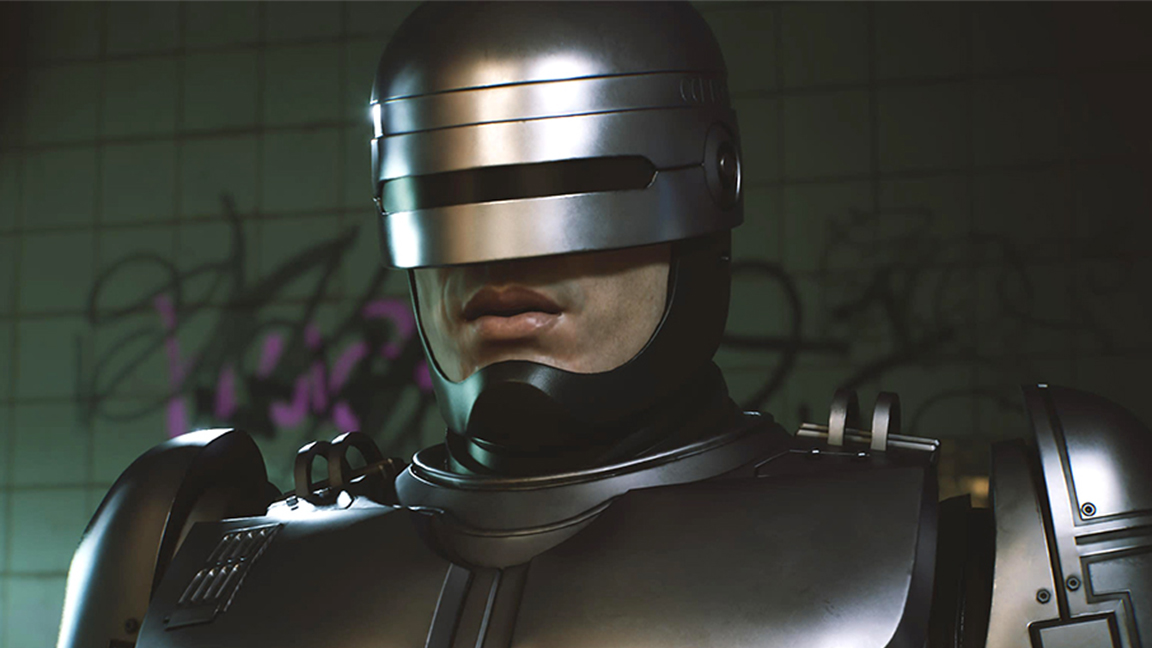
Nostalgia can be a great lever, and it’s one RoboCop: Rogue City pulls at every given opportunity. Developer Teyon doesn’t have the best track record when it comes to cutting edge video games; its reputation for making rough games exists for a reason, past titles, such as Terminator: Resistance, have been plagued by technical issues.

Developer Teyon
Publisher Nacon
Platform Played on PS5
Release 2 November
Available on PS5, Xbox Series X/S, and PC (Steam)
While RoboCop: Rogue City still has its share of glitches, it also has a pitch-perfect interpretation of the subversive 1980s and 1990s movies it's based on. Set after RoboCop 2, with Old Detroit plagued by that movie’s drug, called Nuke, you can almost hear the voice of Frank Miller in every morally dubious quest outcome and line delivery of "Creep", "Slime-ball", and "Dirtbag". (Setting it before the terrible RoboCop 3 is the first sign Teyon really gets this licence.)
Built using Unreal Engine 5, Treyon has managed to make its RoboCop world look solid, glossy and often very real. Lumen delivers ray tracing and Chaos tears that shiny world apart with ease; so technically, Treyon has finally overcome its shortcomings… just.
RoboCop: Rogue City gets a UE5 boost
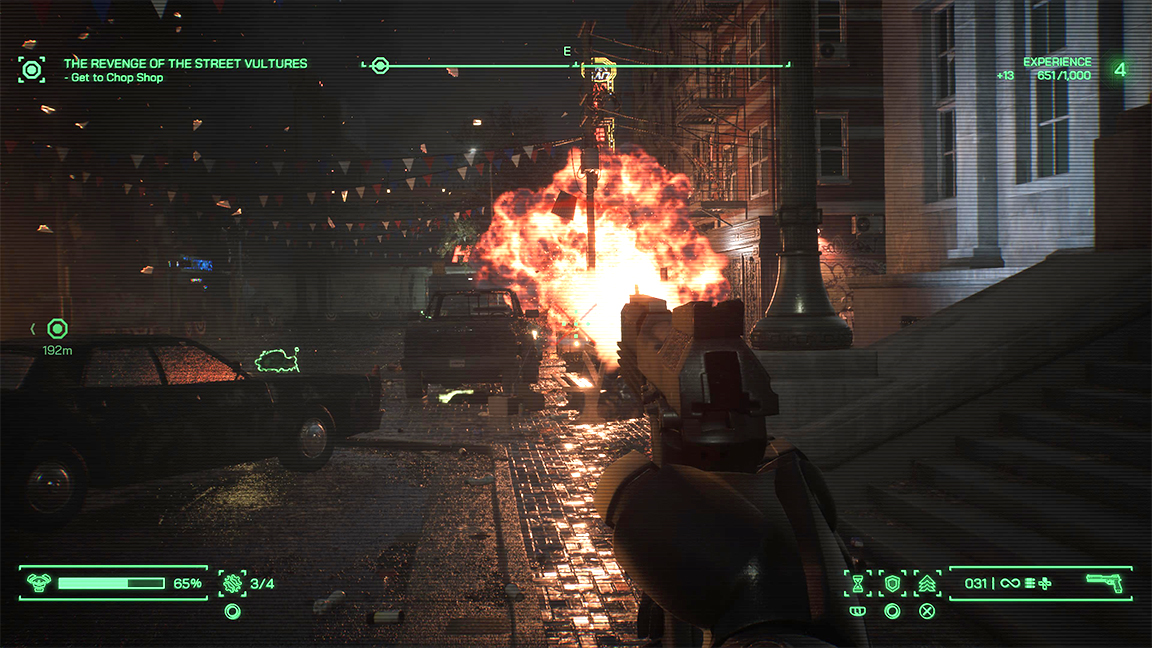
Unreal Engine 5 has clearly enabled Treyon to deliver a slick experience with a small-ish sized team. The streets of Old Detroit are wet and reflective, light sources are cast about the world wonderfully, and when you’re in the midst of a gun fight, with red and blue emergency lights swirling and striking every surface, fire and bullet sparks dancing in puddles, it really does look fantastically solid.
There’s more to RoboCop than the murky streets of Old Detroit, the early small hub area gives way to a glossy marble-rendered courtroom, abandoned warehouses and filthy sewers. I particularly love a stint amidst the riots of a maximum security prison, with thick smoke VFX settling impressively and clouding the screen.
Treyon really benefits from Epic’s new engine, with Chaos splintering and tearing apart the game’s world with satisfying vigour
Treyon really benefits from Epic’s new engine, with Chaos splintering and tearing apart the game’s world with satisfying vigour, playing well into the power-fantasy of being an armoured justice machine.
It’s not just the technical foundations of UE5 that help blow apart RoboCop’s many environments (and perps) in a satisfying way, but the developer’s clear joy of delving into the licence to eke out every violent aspect of this character makes the game more fun than perhaps its by-the-book gameplay warrants.
I love how RoboCop’s Auto-9 gun plays. From the outset it can shred scenery with ease, yet it’s a little slow and lacking punch early on, but upgraded via some simple circuit board puzzles, you can create a weapon that’s either a one-shot bazooka or rapid fire machine pistol that shreds the screen.
RoboCop: Rogue City still has the Teyon touch

Despite its fun and good use of UE5, RoboCop: Rogue City still suffers from occasional frame rate drops, ghosting, texture pop-in, lighting glitches, stiff animation, and a general sloppiness that have plagued previous games from this developer. Some cutscenes in particular are very clunky and the timing jokingly bad. Yet, it kind of doesn’t matter or ruin the experience.
The joy of RoboCop: Rogue City is not strictly its technical achievements, when they happen, just as its many flaws don’t hold back the immersion in this very 1980s replicated world. Where Teyon’s game excels is by revelling in every ounce of fun that comes from the RoboCop licence; the character and his world is a ruthlessly entertaining creation built around moral ambiguity and a hero who can functionally ‘level up’.
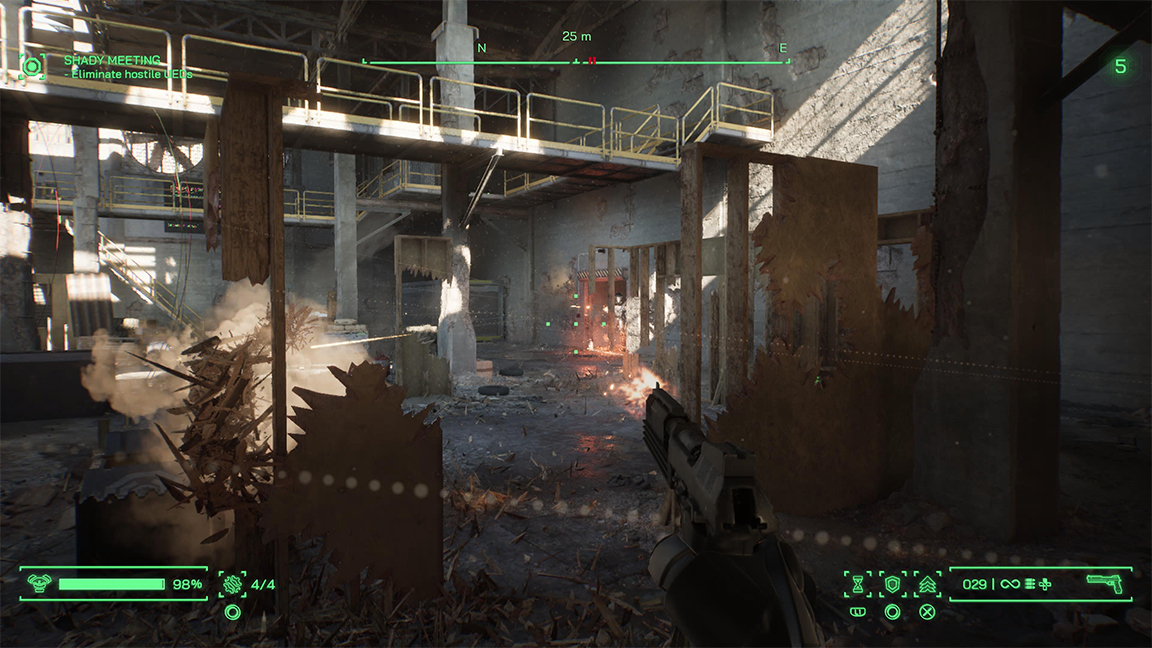
A skill tree enables you to unlock new abilities, including shielding that rebounds bullets at unweary enemies with often funny results, slow-motion bullet time and a power-punch - all very games-y in design, and rarely surprising.
RoboCop: Rogue City also has a set of more interesting upgrades that affect conversations and crime scene scanning. The psychology perks offer insights into the outcome of conversations, which in turn play into the many endings the game offers. Again, not new, but it goes some way to immersing you in RoboCop's world.
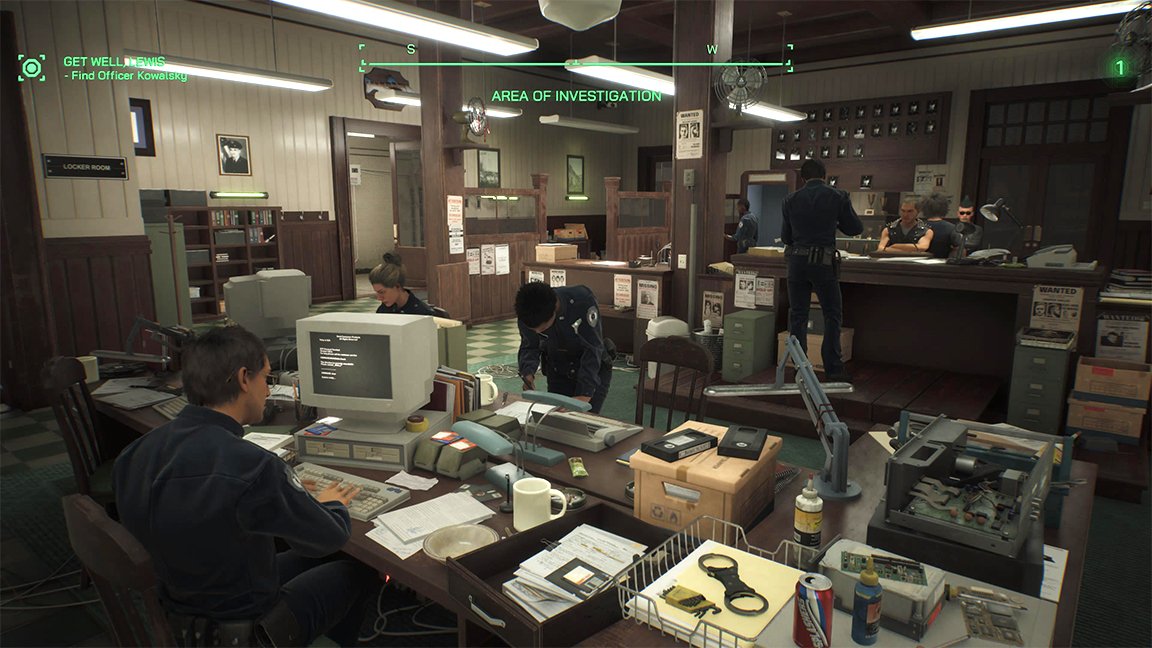
Time spent between the main missions is where Teyon is really having fun. You'll interrupt drug dealers debating macroeconomics and radio ads encouraging children to plan their funerals. When an OCP executive dies, you'll overhear their work colleagues debating if a bonus is still on the cards. The script really helps elevate RoboCop: Rogue City past the occasional poorly animated scene or texture glitch.
Beyond simply shooting apart its detailed environments and gunning down criminals, RoboCop: Rogue City offers a mix of challenges and quests that embrace the licence and evoke a sense of place.
Remember those satirical news montages from the Paul Verhoeven movie that showed the metal lawman saving kittens? Well, Teyon is all in. This game’s miniature quests have you giving out Hallmark Card advice to tramps and, well… saving cats. All delivered in a deadpan way that is partly deliberate and perhaps a little unintentional, the result of a Double-A developer budget.
RoboCop: Rogue City rises about its flaws
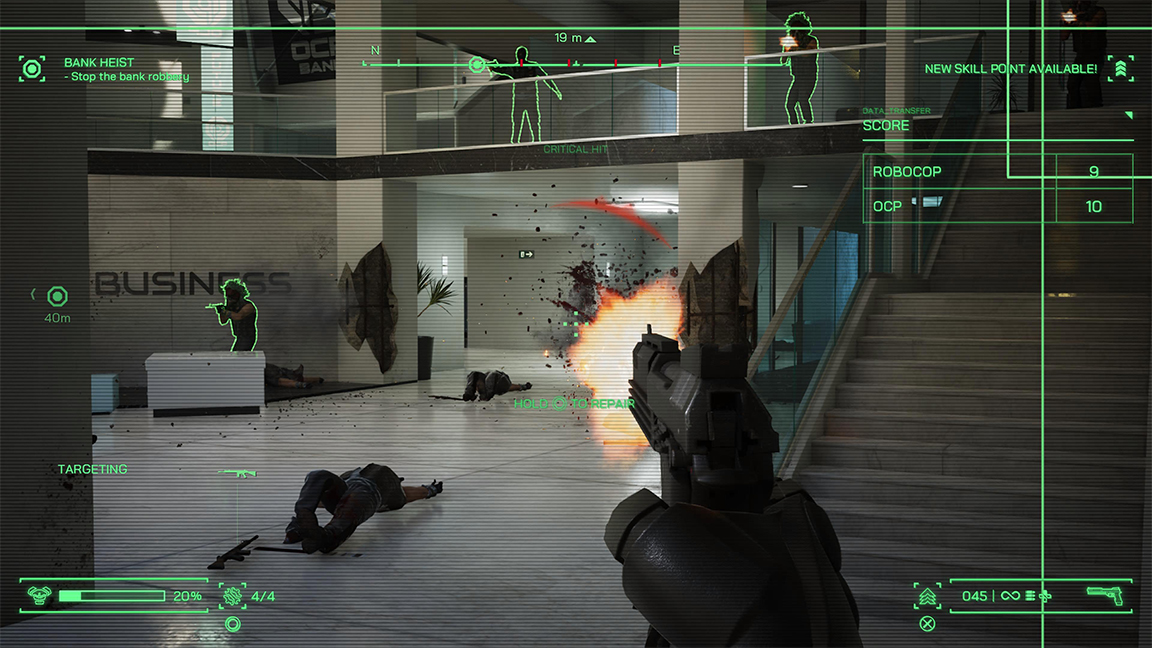
There’s never too much going on, and despite some slim RPG ideas, much of RoboCop: Rogue City revolves around shooting, lots of shooting. While the AI is a little clumsy and loves to run into your bullets, on harder settings you need to make more use of scenery, but as it can be blown apart, later levels soon become satisfying carcasses.
Again, what could hold the game back – dumb enemies – can be overlooked because Teyon is on-point with its design. Entering iron-sights brings up the classic 80s RoboCop targeting system, with green lines sweeping the screen identifying targets just as in the movies.
Fans will eat up RoboCop: Rogue City like an Auto-9 chewing scenery
It's this fan-service that helps push any shortcomings to the back of my mind. Teyon has spent an incredible amount of time getting the look of the game to replicate the feel of the movies; from logo design to audio references and even some setup shots and lighting that ape the 1989 film, it’s hard not to just love experiencing this faithful and authentic world. (There are even 80s references that step outside of RoboCop, such as a nod to They Live and a villain with a slight resemblance to Die Hard’s Hans Gruber.)
My brain says "it’s another glitchy mess" but my heart wins out, and tells me to "keep playing slimball", as sometimes, when visual and production design is this well executed, you can forgive a game’s shortcomings, its stilted animation and frame rate drops - to paraphrase Dick Jones, "it's just a glitch". Fans will eat up RoboCop: Rogue City like an Auto-9 chewing scenery.
A copy of RoboCop: Rogue City was provided for review by Nacon.



